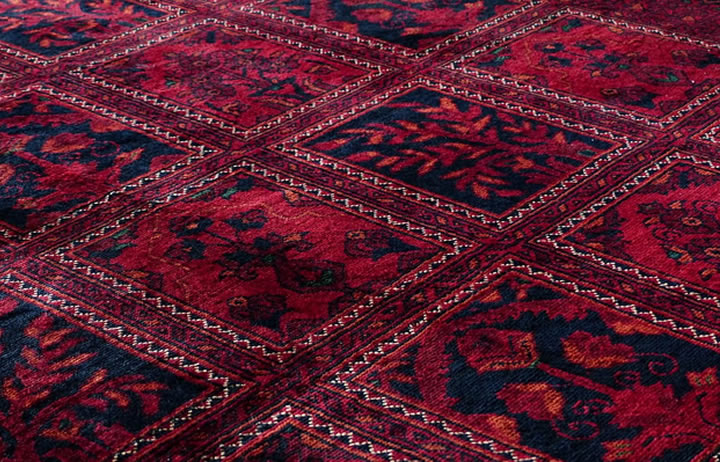Choosing the Right Size and Color of Rug for Your Space
When choosing the right size and color of a rug for your space, consider the following tips. For size, ensure that the rug is proportionate to the room and its furniture.
In the living room, the rug should be large enough to accommodate all key furniture pieces, with the front legs resting on the rug. In the dining room, select a rug that extends beyond the table and chairs when they are pulled out.
For color, determine if you want the rug to be a focal point or to blend in with the existing decor. If you prefer a statement piece, opt for a contrasting color. If you want a cohesive look, choose a color that complements the dominant hues in the room.
How to Care for Large Area Rug to Keep it Looking Great
Caring for a large area rug is essential to maintain its beauty and longevity. Here are some tips to keep your rug looking great:
Regular Vacuuming: Vacuum the rug at least once a week to remove dirt, dust, and debris. Use a vacuum cleaner with a brush attachment or a beater bar specifically designed for large rugs.
Spot Cleaning: Attend spills or stains immediately to prevent them from setting. Blot the area with a clean cloth or paper towel, working from the outer edges toward the center to avoid spreading the stain.
Use a mild detergent or a specialized rug cleaner recommended by the manufacturer.
Professional Cleaning: Every 12-18 months, consider professional cleaning for the deep dirt removal. Choose a reputable rug cleaning service that specializes in large-area rugs.
Rotate Regularly: Rotate the rug occasionally to distribute wear evenly and prevent one area from becoming more worn than the rest.
Protect from Sunlight: Direct sunlight can fade and damage the rug over time. Use curtains, blinds, or UV-resistant window films to protect the rug from excessive exposure.
Prevent Slippage: To avoid the rug from slipping or sliding, use rug pads underneath to provide grip and cushioning.

Creative Ways To Incorporate Rugs Into Your Interior Design
Incorporating rugs into your interior design can add warmth, texture, and visual interest to your space.
Here are some creative ways to incorporate rugs:
- Layering: Experiment with layering rugs of different sizes and patterns.
Place a smaller rug on top of a larger one to create depth and dimension.
- Define Zones: Use rugs to define different functional zones within an open floor plan.
Place a rug under a dining table or a seating arrangement to visually separate the areas.
- Wall Art: Turn a beautiful rug into a unique piece of wall art.
Hang it on the wall as a tapestry to add color and texture to your space.
- Statement Piece: Choose a large and eye-catching rug as a statement piece.
Let it be the focal point of the room and build the rest of the home décor around it.
- Hallway Runners: Use long, narrow rugs as hallway runners to add style and comfort to high-traffic areas.
- Unexpected Spaces: Don’t limit rugs to traditional areas.
Consider placing a small rug under a desk, in front of a fireplace, or even in the bathroom for a cozy touch.
The Benefits of Adding a Soft, Cozy Touch With Large Rugs for Bedrooms
Large rugs for bedrooms can bring numerous benefits, especially in terms of softness and coziness.
Here are some advantages:
Comfort: Large rugs provide a soft and plush surface underfoot, adding a luxurious and comfortable feel to the bedroom. They create a warm and inviting space to step into when getting out of bed.
Noise Reduction: Rugs absorb sound and reduce noise transmission, making them ideal for bedrooms. They help to create a quieter environment, minimizing disruptions from footsteps and echoes.
Warmth and Insulation: Rugs provide an additional layer of insulation, helping to retain warmth in colder months. They can help to keep the room cozier and prevent cold floors from chilling the feet.
Style and Aesthetics: Large rugs can serve as statement pieces or complement the bedroom’s decor. They add visual interest, texture, and color, enhancing the overall aesthetics of the space.
Protection: Rugs offer protection to the underlying flooring, preventing scratches, scuffs, and wear. They act as a barrier against spills and stains, safeguarding the original flooring’s condition.
Different Types of Oversized Rugs for Dining Rooms
When it comes to oversized rugs for dining rooms, there are various types to choose from, each offering its own unique characteristics.
Here are a few options:
Rectangular Rugs: Rectangular rugs are a classic choice for dining rooms. They provide a defined space for the dining table and chairs, creating a cohesive and visually pleasing arrangement.
Round Rugs: Round rugs can add a touch of elegance and softness to a dining room. They work well with circular or oval dining tables, creating a harmonious and balanced look.
Square Rugs: Square rugs can be a stylish alternative to rectangular rugs. They add a modern and geometric element to the dining room, and they work particularly well with square or round dining tables.
Persian or Oriental Rugs: Persian or Oriental rugs can bring a sense of tradition and sophistication to a dining room. Their intricate patterns and rich colors can create a captivating focal point in the space.
Conclusion
Incorporating large area rugs into your living spaces can transform the atmosphere and create a cozy ambiance. These rugs offer comfort underfoot, reduce noise, and provide a soft touch that enhances the overall comfort and warmth of the room.
Whether used in the bedroom, living room, or dining room, large area rugs bring style, texture, and visual interest to the space. They protect the flooring, define zones, and can serve as statement pieces or complement existing decor.

